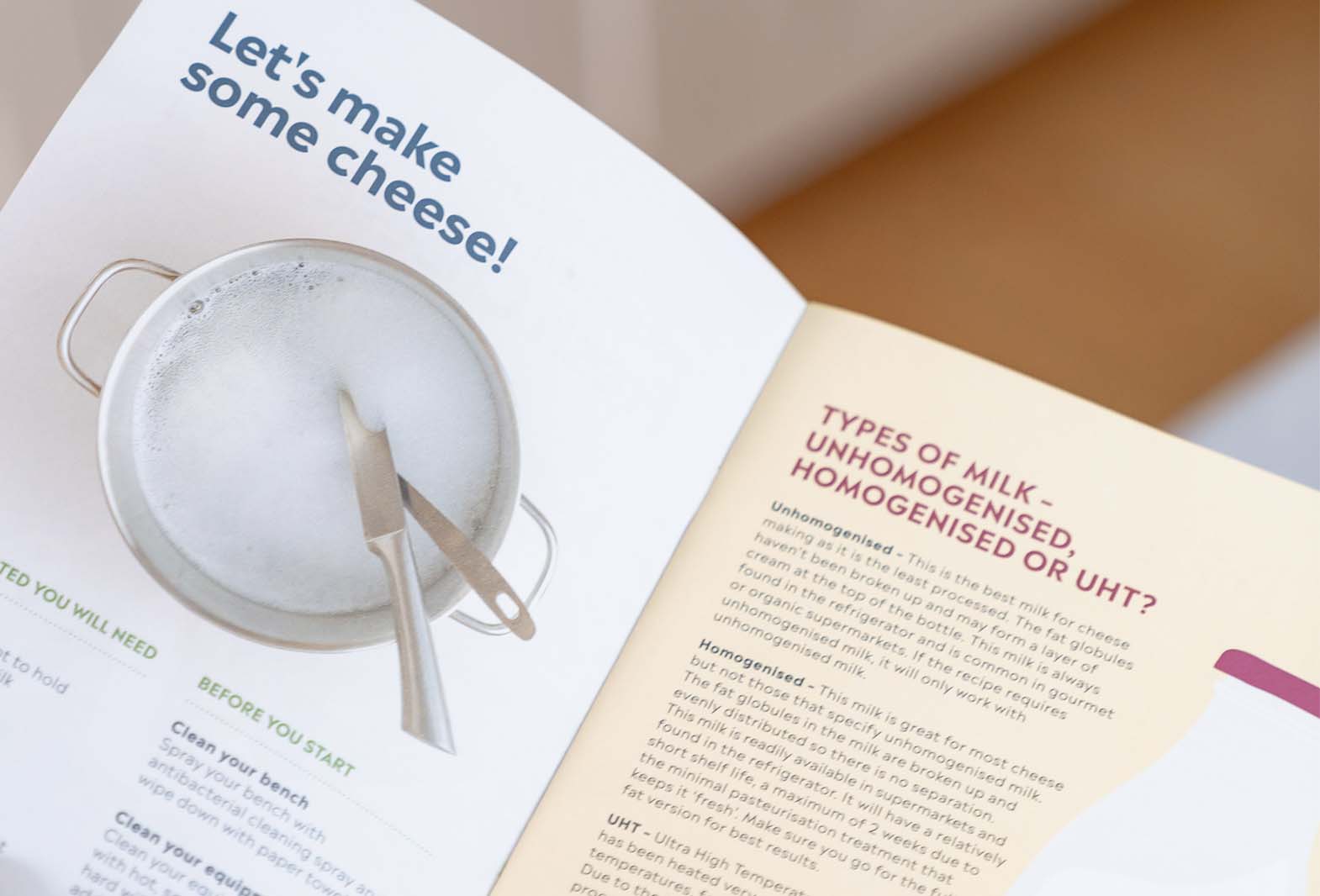Our Blog

Different types of milk
Good quality milk is where all cheese making starts. Along with quality, it’s so important to make sure you’re buying the right type of milk, otherwise, you may find your cheese making doesn’t work out quite as expected. There are three main types of milk that you will find in the supermarket, they are all pasteurised but use slightly different methods during the production process.
Good quality milk is where all cheese making starts. Along with quality, it’s so important to make sure you’re buying the right type of milk, otherwise, you may find your cheese doesn’t work out quite as expected.
There are three main types of milk that you will find in the supermarket, they are all pasteurised but use slightly different methods during the production process. Pasteurisation is the process of heating the milk to kill all the nasty bugs that are naturally present. Unpasteurised milk is often referred to as ‘raw’ milk and it is illegal to sell this in supermarkets due to the high risk of microbial contamination. If you know someone who can provide you with raw milk straight from a farm, we strongly recommend you pasteurise this prior to cheese making.
Below are some details around the three different types of milk that are regularly found on the shelf, why they are different and what cheese you can make with them.
Homogenised milk
This is the most common milk on New Zealand, Australian and UK supermarket shelves. The process of homogenisation is when the fat globules that are naturally present in the milk are broken up into tiny little molecules. Once this is done, the fat is evenly distributed throughout the milk and you have a homogenous milk product where the texture is the same throughout. When Mad Millie products specify homogenised milk, we are referring to fresh, homogenised milk and not UHT milk (see below for UHT milk). Fresh, homogenised milk will normally be in a plastic bottle and have a shelf life of fewer than 3 weeks. Make sure you go for the full-fat version for the best cheese-making results.
Cheeses that require fresh, homogenised milk include cottage cheese, cream cheese, quark and ricotta.
Unhomogenised milk
This is the best milk for cheese making. With unhomogenised milk the fat globules aren’t broken up and the milk may form a layer of cream at the top of the bottle. This is the least processed milk you can buy in a store and will always be found in the refrigerator with a relatively short shelf life. This milk is more common in gourmet or organic supermarkets, keep an eye out as it will state on the label that it is unhomogenised. If the cheese recipe you are making requires unhomogenised milk, then it will only work with unhomogenised milk.
Cheeses that require unhomogenised milk include mozzarella, specialty cheeses like camembert, brie and blue cheese, all hard cheeses. Feta and halloumi will also work better with unhomogenised milk.
UHT
Ultra-High Temperature (UHT) milk has been heated very quickly to high temperatures for a short period of time. Due to the high temperatures during processing, this milk is not very good for cheese making as all the proteins have been denatured (broken up). UHT milk is usually found in a cardboard carton at room temperature, as it’s sterile so it doesn’t require refrigeration. Some supermarkets will store UHT milk in the refrigerator to encourage you to purchase it. If you’re not sure, check the best before date; a shelf life greater than 1 month is probably UHT. We do not recommend UHT for cheese making.
